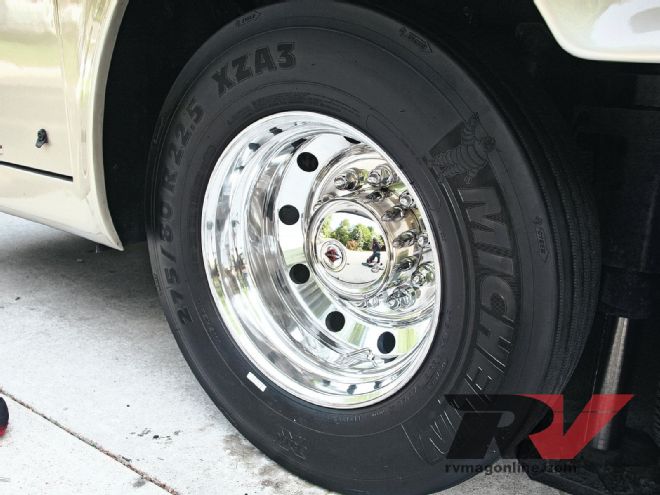
| rv Tires Care And Maintenance Guide michelin Rv Tire
Tires are the single most important item on your RV. Face it, without them your RV is just a small home/storage shed.
Tires are what allow us to transport our cargo and family to wherever we want to go. They put the mobility into our RVs, whether it’s motorized or towable. Yet, as important as they are, tires are not fully understood and often neglected. This can lead to excessive wear and can create some serious safety concerns.
Air Pressure
When you think about it, the tire itself really doesn’t support anything. One look at a vehicle with a flat tire will easily tell you that. What really supports the vehicle is the air inside the tire. The air pressure fills the tire and applies pressure to the area of the tire where it meets the road, which is called the contact patch. Multiplying the contact size by the air pressure will determine what the load capacity is. For example, a tire that has a contact patch of 16 square inches will support 800 pounds if inflated to 50 psi, because 16 x 50 = 800. Increasing that tire’s pressure to 100 psi would then double its capacity to 1,600 pounds.

| Tire pressure gauges are available in both mechanical and digital models. Air expands when heated so make sure to check your pressure when the tires are cold.
Age and Types
Old age is hard on everyone, and tires are no different. On your daily driver you’ll generally replace your tires when the tread is worn out. An RV doesn’t put that many miles on it, so for most RV owners that tread will seemingly last forever. Unfortunately, there’s more to tire life than tread wear. RV tires are typically replaced due to age as they weather. Just as a rubber band placed in the hot sun crumbles into a pile of dry rubber shards, your RV tires will also degrade over time.
Tire compounds are fairly high tech and incorporate special natural lubricants, which are impregnated into the rubber compounds to prevent sidewalls from drying out and cracking. These lubricants are designed to be released via the natural flexing of the tire as it is being driven. But since an RV spends a fair amount of time being parked, those lubricants don’t get to do the job they were intended for. The sun’s damaging UV rays accelerate the aging of the tire sidewall as well and the lubricants in the tread will also be wicked away if parked on a concrete or asphalt surface. Parking for an extended period of time will also tend to harden that area and flat spot your tires. So, you can see that long-term parking your RV is not the best thing for your tires. They need to be driven.

| The maximum pressure and load rating is stamped into the sidewall of every tire. To determine the minimum pressure, you should have your RV weighed in its fully loaded condition and refer to the manufacturer’s published inflation tables.
Most RV tires will have a service life of five years. However, a recommended lifespan of up to 10 years can be obtained when certain factors, such as weather, storage conditions, inflation pressure, speed, exposure to ozone, and maintenance are more favorable. Michelin recommends having your tires inspected annually after the first five years.
Fortunately, the Department of Transportation (DOT) has established a uniform tire identification code that identifies the date of manufacture so that you can determine just how old your tires are. Keep in mind that a tire on a new vehicle may be much older than when you first purchased it. The tire may have sat in a warehouse for a bit before finally being installed on the RV. When examining the DOT number for the build date, check the last four digits. The first two of these refer to the week of the year while the last two refer to the year itself. For example, a tire with a DOT code of 0610 was produced in the 06th week of 2010.
Care and Maintenance
Proper care of your RV tires basically revolves around keeping them clean and dry so that the natural lubricants in the rubber compound that protect your tires won’t erode away over time. Road oil and dirt will also suck the life out of your tires so it’s important to keep your tires clean. Oil will deteriorate the rubber and dirt will act as a sponge and hold any contaminants next to the tire. Use a soft brush and mild soap to clean your tires.

| When choosing a tire protector or sealant, be sure that it does not contain any silicone, alcohol, or petroleum products. Products such as this Meguiars #40 help screen out damaging UV rays.
Once they are clean you can use a tire dressing to “protect” your tires from aging, but be very careful. Many of these treatments do more harm than good. Never use a dressing that contains petroleum products, alcohol, or silicone because they will cause sidewall cracking and accelerate the aging process. If you find a good tire dressing that does not contain these products, yet offers a UV barrier, your tires will benefit from it.
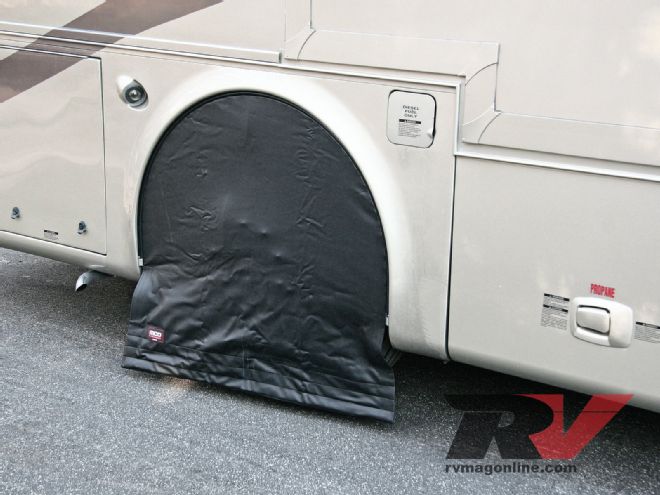
| Various styles of tire covers are available to help shield your tires from the sun’s harmful UV rays. These heavy duty tire covers by MCD Innovations easily slide into mounting tracks in the fender wells.
Two other factors that dry out tire sidewalls are sunlight and ozone. Ozone eats rubber, so don’t park your RV in an area where welding is being done or near electrical generators or transformers, as ozone is created by high electrical use. Sunlight contains harmful UV rays that dry out rubber so if you are going to beparking in a sunny area for a while it’s a good idea to cover your tires. It can be as simple as a piece of plywood laying up against the wheel well or better yet, a nice custom fit tire cover.
Proper inflation is the most important factor to the longevity of your RV tires. Follow that with proper cleaning and storage techniques and you’ll find that your tires will treat you well.
 | rv Tires Care And Maintenance Guide michelin Rv Tire
Tires are the single most important item on your RV. Face it, without them your RV is just a small home/storage shed.
| rv Tires Care And Maintenance Guide michelin Rv Tire
Tires are the single most important item on your RV. Face it, without them your RV is just a small home/storage shed. 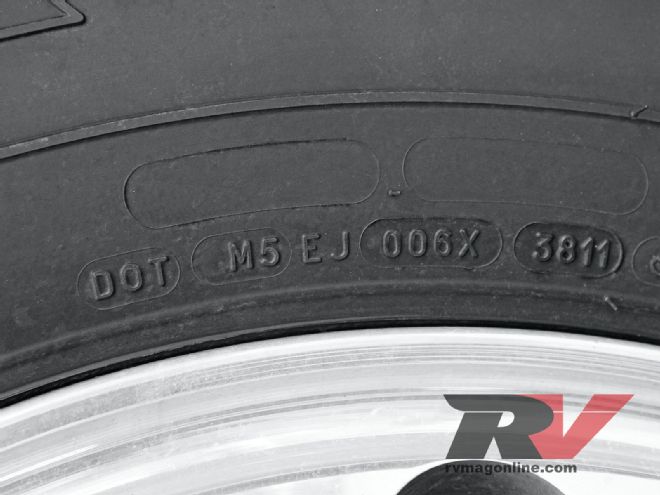
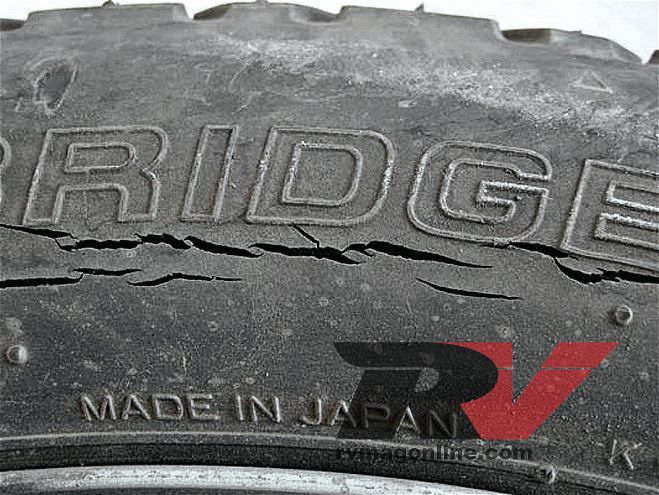
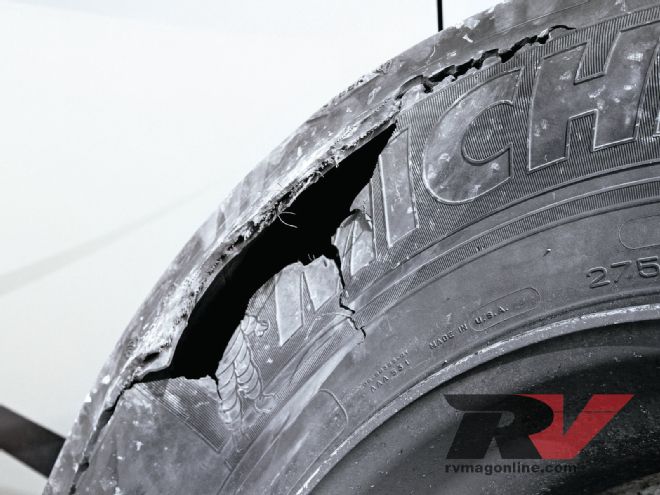
 | Various styles of tire covers are available to help shield your tires from the sun’s harmful UV rays. These heavy duty tire covers by MCD Innovations easily slide into mounting tracks in the fender wells.
Two other factors that dry out tire sidewalls are sunlight and ozone. Ozone eats rubber, so don’t park your RV in an area where welding is being done or near electrical generators or transformers, as ozone is created by high electrical use. Sunlight contains harmful UV rays that dry out rubber so if you are going to beparking in a sunny area for a while it’s a good idea to cover your tires. It can be as simple as a piece of plywood laying up against the wheel well or better yet, a nice custom fit tire cover.
| Various styles of tire covers are available to help shield your tires from the sun’s harmful UV rays. These heavy duty tire covers by MCD Innovations easily slide into mounting tracks in the fender wells.
Two other factors that dry out tire sidewalls are sunlight and ozone. Ozone eats rubber, so don’t park your RV in an area where welding is being done or near electrical generators or transformers, as ozone is created by high electrical use. Sunlight contains harmful UV rays that dry out rubber so if you are going to beparking in a sunny area for a while it’s a good idea to cover your tires. It can be as simple as a piece of plywood laying up against the wheel well or better yet, a nice custom fit tire cover.